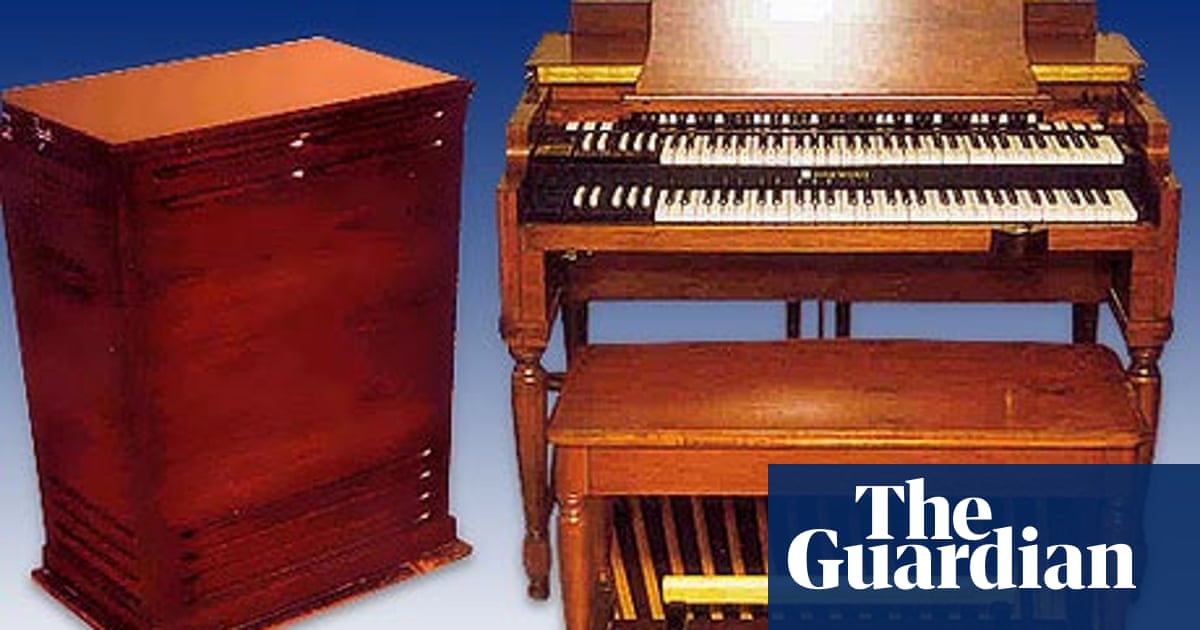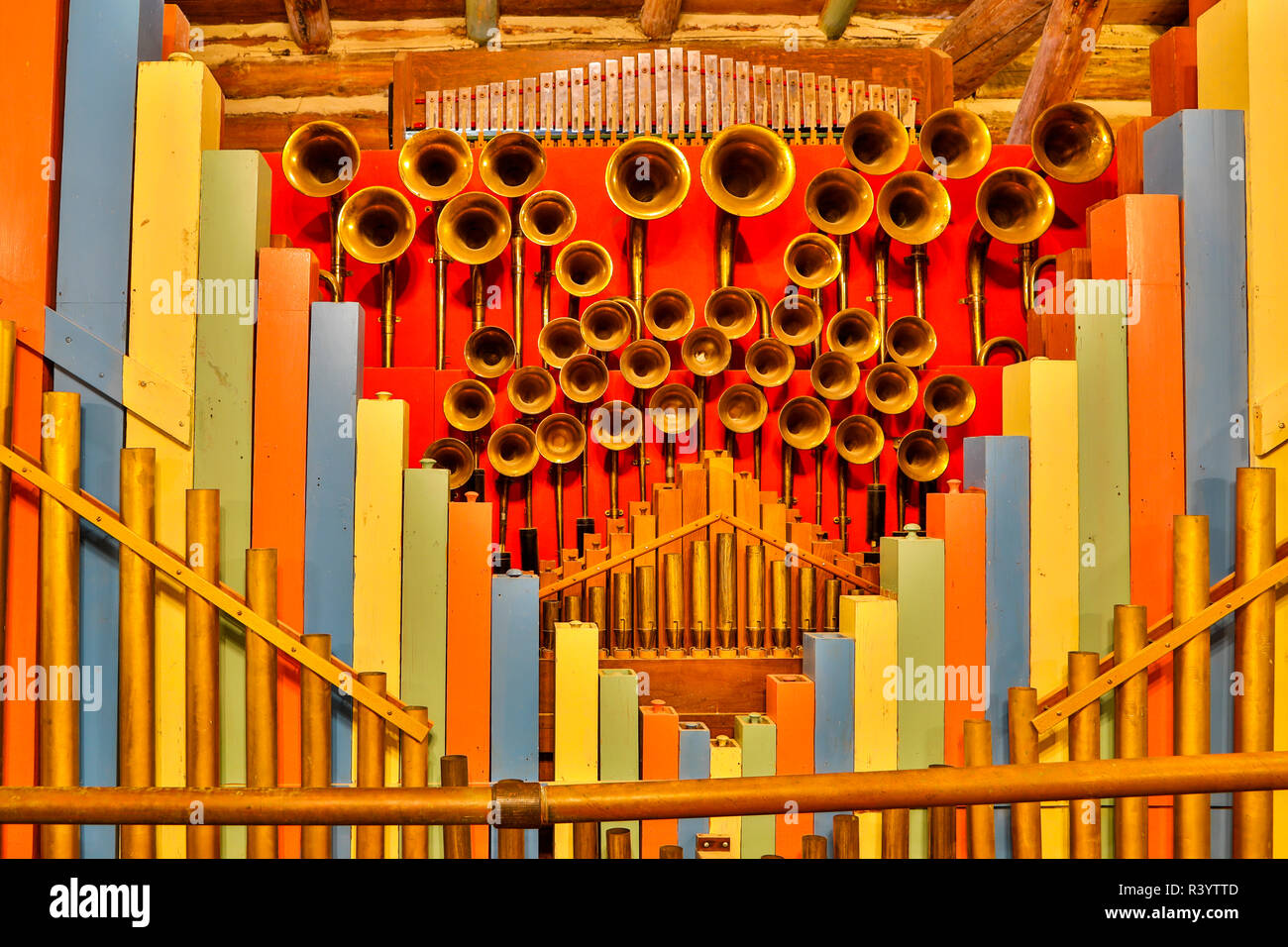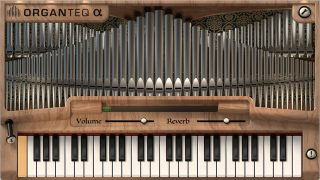Recently, I picked up an iPad 2 on it's US release day even though I'm up in Canada. Luckily a fellow Apple fan made the trek to Buffalo and got two. Speed is definitely better on these new models and because of this, GarageBand for iPad has become a new addiction of mine.
Read on find out more about my experiences with GarageBand for iPad and all the ways I put it to the test as a real-time instrument and multi-track recording device.
Pipe Organ Garageband Ipad Installing Scratch Live On Mac Omnisphere 2 Wiki Izotope Alloy 2 Insight Rx. 3 Virtual Dj Mac Recursive How To Remove Cover Art In Mixxx Virtual Dj Sounds Free Download Normalize And Fix Mp3s With Izotope Rx Garageband Ipad Export Format Smart Piano Garageband Ipad.
Not being a very good keyboard player always looking for easy ways to add organ,pian, or strings to a song. Recently I patched my Pro to my audio interface via a 1/8 stereo to 1/4 mono adapter cable. Started Garage Band.added a track. On that track I inserted SMART KEYBOARD. A GarageBand iOS (iPad/iPhone) tutorial for brand new beginners!.Check out my NEW GarageBand iOS Masterclass For Beginners!.https://dean-davis.mykajabi.com. But GarageBand can do much more than this: it gives you complete control over its Software Instruments. You can sculpt synth sounds, re-create vintage instruments, change a seventies sound to an '80s instrument, create wonderful electronic sweeps and swirls in synthesizer pads, emulate your favorite artist's axe, etc etc.
In a Live Jam
I went to a jam night with only an M-Audio Axiom Pro and my iPad 2 with USB camera connection kit using GarageBand. The pianos were responsive and sat well in the mix. But the highlight had to be the B3 organs. At least 3 other keyboardists came up to check out the setup and were very impressed with the sound. Switching between piano, organ and synths was also fast.
My wish list... layers/split for piano/bass and piano/pad sounds etc., more effects, third party plugins and perhaps more sounds like strings. Heck Apple... just give us a version of MainStage on an iPad! The camera connection kit I used to connect the USB out of the Axiom Pro to the iPad works well but also presents its own set of problems. I found the adaptor pops out of the iPad too easily and it became frustrating to get the sounds playable again from the Axiom Pro without restarting the application or even having to restart the iPad. If you were also customizing your patches or now saving your song and adding a name to it, the connection had to be pulled so that the onscreen keyboard could pop up.
Back in the Studio

As for recording on the iPad 2 with GarageBand, I was finding myself smiling immensely. It's not perfect but considering what we're able to do for an app that's less then $5 on such a thin device just boggles my mind. You get soft synths, guitar amps, loops, sampler and 'smart' instruments.
Limitations include the lack of effects other then reverb and delay, the number of song sections you can add (10 total although you could forgo this by doing 'Automatic' mode which gives you an unlimited number of bars), no key or tempo changes within a song, and a big one of editing MIDI note/audio data after you've recorded. I also would have enjoyed being able to assign some knobs to filter cutoff, resonance, etc. on my Axiom Pro and record the filter sweeps but still... we're talking $5 and you can do more editing when you transfer the song to GB on a mac!
Get Looping
Just like Garage Band on the Mac, the iPad version has Apple Loops. Great for starting off although I find I can identify more and more of these loops in songs, TV, commercials, etc. The set of loops provided are also only a small set from what you may be used to on the Mac version and I hope we can eventually add more including our own loops. One thing that's annoying is when adding the loops is it will take up the whole section from the bar where you dropped it in right on to the end of the section. So instead of a 2 bar loop being only 2 bars, it will fill up a section that may be 8 bars.
Get Smarter
Apple says that the anyone can be a musician with it's Smart Instrument section which I always chuckle at. To a certain point I understand where they're going with this but eventually it helps to actually know some music theory, etc. A word of advice for the beginner musician... keep track of your chord changes and you'll have a much better sounding song with little chance of chord conflicts between instruments. But even for the knowledgable musician, inspiration can come from these instruments. I especially found the Smart Drums useful with it's 'roll the dice' section of random patterns.
Even piano patterns that you may not have thought of or perhaps you can't play guitar vey well but are able to use the autoplay which 'strums' or 'picks' notes for you.
Guitar Input
If you're a guitarist, GarageBand can be become a great practice tool especially with it's amps but you'll need to get an input device like IK Multimedia's iRig or Apogee's Jam to plug in your guitar. GB gives you a section of amps from Marshall to Orange and even pedal options too.

The sounds are not bad and should satisfy most guitarists needs especially for demoing material. In the future, I would love to see MIDI control of the pedals, etc. through the USB camera connection kit and custom presets.
Vocal Input
Vocalists can also get in on the action but, again, for best sound quality, you're going to need something like BLUE's new microphone, the 'Yeti Pro' which has a USB connector.
You can record your vocals and then change your voice with effects like 'Telephone', 'Bullhorn', 'Chipmunk', etc. Perhaps in version 2, Apple could also give us some more 'useful' presets for songwriters although the 'small room' and 'large room' aren't a bad start and have some basic compression for dynamic control.
What we have today is just the beginning and I can see updates coming down the pipe that will make GB more powerful. For some other great tips on using GarageBand on the iPad check out Rounik Sethi's article '5 Essential Workflow Tips for GarageBand for iPad'

Till next time... keep rocking!
More then ever, it has become easier to lay down your song ideas while on the move. With GarageBand for iPad, we are also closer then ever to having a full professional recording studio in a very thin package. And at a price of $4.99, who can complain? For those who are just starting out, here's a first tutorial on recording guitar to get you and your iPad rocking.
Setup und Ausrüstung erforderlich
Pipe Organ Garageband Ipad
First off, noch bevor Sie die Anwendung starten, sollten Sie die benötigte Hardware, um Ihnen zu ermöglichen Ihre Gitarre an Ihren iPad aufzunehmen. Es gibt zwei grundlegende Arten Eingang müssen Sie beachten:
- Guitar Input for Electric Guitar and Bass (IK Multimedia iRig, Apogee Jam, AmpKit Link)
- Mic Input for acoustic guitar (IK Multimedia iRig Mic, Blue Yeti Pro -- requires Apple's Camera Connection Kit)
L bis R: IK Multimedia ist iRig, Blue Yeti Mic, Apple Camera Connection Kit
Guitar Amp
Launch GarageBand for iPad and plug your guitar into the iRig. On the left of the screen is a ' 1/4' jack' button which lets you add a noise gate. Handy for those distorted tones. Next to it is the guitarist's best friend: the Tuner... no excuses for a flat g-string!
In the middle, you can select from different amp combinations and even save settings of your own. You can also swipe the amps to keep the same preset settings and try these settings on different amps.

Ganz rechts ist die 'Pedale' Abschnitt. Hier können Sie bis zu 4 Pedale, ändern ihre Auswirkungen auf und entfernen Pedale. Um wieder auf die Amp-Sektion, tippen Sie auf die 'Amp'-Symbol auf der rechten Seite des Bildschirms. Eine nette Sache über GB für iPad ist, dass man die Verstärker-Einstellungen ändern, nachdem Sie Ihren Teil aufgenommen haben und sogar Ihre eigenen Presets für zukünftige Aufnahmen.
Pipe Organ Garageband Ipad Case
Audio Recorder
Wenn Sie Akustikgitarre aufnehmen möchten, können Sie mit dem iPad ist das integrierte Mikrofon, aber ich würde empfehlen, sich bei Blue Mikrofon ist 'Yeti Pro' oder Apogee bevorstehende 'Mic' zu einem professionellen Glanz zu Ihren Aufnahmen hinzufügen. Beim ersten Öffnen Audio Recorder es gibt Ihnen ein VU-Meter, um Ihre Audio-Eingangspegel zu überprüfen. Ein Noise Gate ist auch durch Tippen auf das '1 / 4' Stecker '-Symbol zur Verfügung.
Sobald Sie ein zu nehmen, können Sie fügen Sie dann die Verarbeitung, den Ton von einer vorgegebenen Auswahl, die Effekte und Stimme Transformatoren gehören. Die Effekte geben Ihnen auch Schieberegler für die Kompression, Reverb, Chorus, etc. je nach Effekt, den Sie wählen.
Pipe Organ Garageband Ipad Pro
Recording Tipps!
Pipe Organ Garageband Ipad Cover
In erster Linie ... PRAXIS! GB auf dem iPad nicht editieren lassen, wie GB auf einem Mac und Sie nicht bekommen, Funktionen wie Flex Time, multiple, nimmt Pitch-Korrektur, etc. Außerdem müssen Sie die Teile an das Tempo des Songs im Gegensatz zu denen, die spielen langsam ein Lied ab, notieren ihre Rolle und beschleunigen sie nach. Während manche würden dies als ein Nachteil, schau ich es als positive Entwicklung für die musikalischen Fähigkeiten und letztlich gibt Ihnen ein besseres Verständnis für Ihren Song. Immerhin, ein besserer Musiker ist ein lebenslanger Prozess und nicht ein Mittel zum Zweck.
Nach der Aufnahme einer elektrischen Gitarre, die Sie haben viele Möglichkeiten, um den Ton beeinflussen, wie die Verstärker EQ und FX-Pedale zu komprimieren, etc. Wenn Sie eine Rückmeldung über die E-Gitarre aufnehmen möchten, müssen Sie die Ausgabe an die Lautsprecher anschließen und steigern Sie die Lautstärke. Aber ... vorsichtig sein, da jeder Amp / Gitarre hat ihre eigene Charakteristik für Rückfragen und einige sind einfach nur unkontrollierbare ohrenbetäubenden Kreischen. Layering Gitarren hat auch die üblichen großen Klang, sondern auch frisst Spuren so Planung ist von entscheidender Bedeutung.
Auch bei der Planung Ihres Songs Teile, zu berücksichtigen, dass GB für iPad Dinge in 'Sektionen' und nur bis zu 10 Sektionen hat. Dies mag zwar nicht so eine große Sache scheint, werden Sie wollen, um herauszufinden, die Teile / Abschnitte des Songs vorher. Zum Beispiel, Song-Intro, Vers 1, Pre-Refrain, Strophe 2 mit aufgenommen Gitarre, Pre-Chorus mit Orgel, Chor, Vers 3 mit weniger Instrumenten-, Brücken-, Intro, Chorus, Chorus 2, Ende, etc. Sie können setzen die 'Sections' in 'Automatic'-Modus, der Ihnen was Menge an Bars Sie also Rekord Intro, Vers 1 zusammen wollen.

Bei der Aufnahme einer akustischen Gitarre oder ein Instrument, sollten Sie versuchen, verschiedene dauert mit USB-Mikrofon oder iPad mic an verschiedenen Stellen und Entfernungen von der Gitarre. Mic Platzierung ist sehr kritisch zu einem anständigen Klang zu erhalten. Zum Beispiel können Platzierung ein Mikrofon in der Nähe des Schallloch der Gitarre hinzu unerwünschte tiefe Frequenzen. Obwohl mit dem iPad mic Ich fand, dass dies der beste Ort sein.
Auch gibt es keine EQ Frequenzbänder, damit Sie die Dinge nach der Aufnahme zu fixieren. Für einen helleren Ton, sollten neuere Strings oder eine härtere holen. Bei Verwendung des iPad mic sicher, dass Ihr Zimmer ist so leise wie möglich, weil es holen werde bis jedes kleine Geräusch, wie das Signal-Rausch-Verhältnis ist nicht so toll.
Pipe Organ Garageband Ipad Mini
Stay tuned für mehr GarageBand für iPad Tipps und Tutorials auf Aufnahme Synthesizer, Klavier, etc. und Gesang!